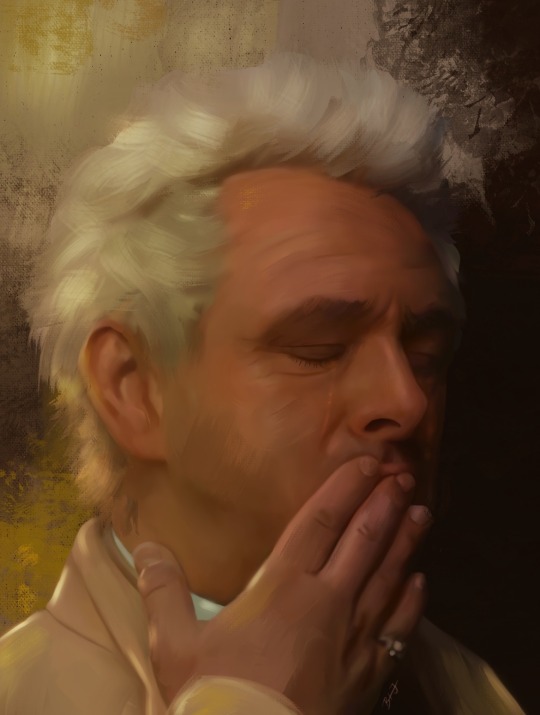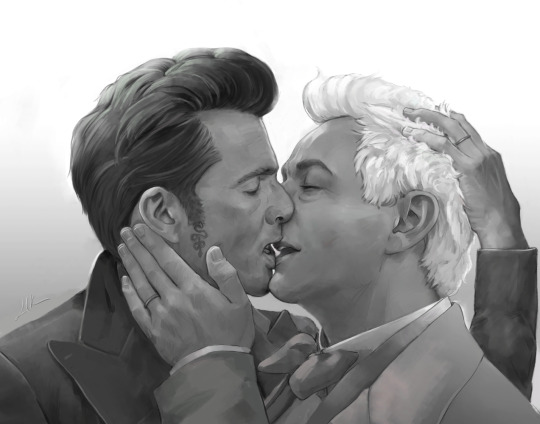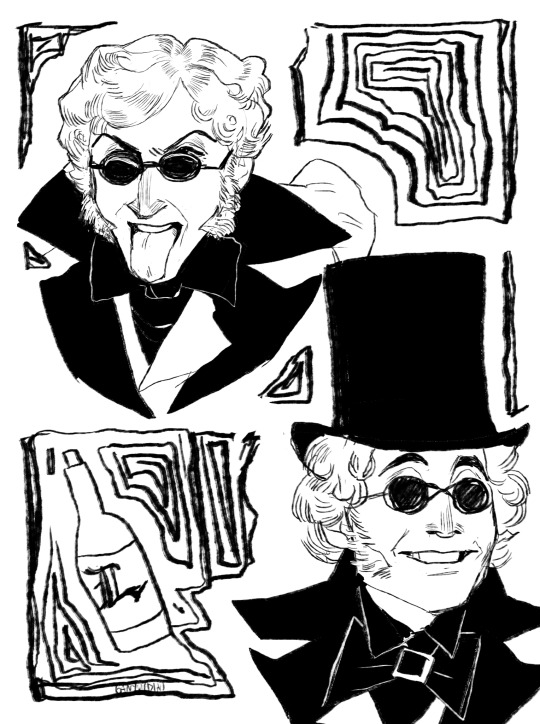Text
Why are Shax and War so similar?




That's it. That's the post.
#good omens 2#art director talks good omens#good omens meta#go season 2#go meta#good omens season 2#good omens season two#good omens#go2
59 notes
·
View notes
Note
Hi, I’ve only read one meta by you yet, but you seem to be just the right person to ask this: did you notice how many people in the scenes outside the bookshop are wearing orange, in series 2?
Any idea what that’s all about? Is it just esthetics, an echo of the bookshop‘s columns, or does it have a filmographical significance? Everytime I watch the show there seem to be more orange clothes, once you start seeing that, it’s crazy how many there are!
Hey thanks for the ask! I mean, you have until 2026 to read more of my drivel so; pace yourself!
Orange clothing is definitely an *interesting* choice for extras in film. You almost never see it in background actors clothing because... it draws the eye! The fact that they included so much orange, yellow, and loud patterning in the extras in season 2 is a real decision to throw film tradition and S1 cannon out the window.
I would like to submit my own theory that the choice was made as a deliberate nod to time travel. But first, a little background.
Compare two crowd scenes on Whickeber street from each season: It's kind of nuts that even at microscopic resolution we get such a HUGE difference.


That's not to say orange is missing. Here are the only two extras wearing orange in S1, and they happen to be in the same scene in episode 2, when Newt and Shadwell meet for the first time, discussing occult beings "hiding in plain sight". (witches in this case)
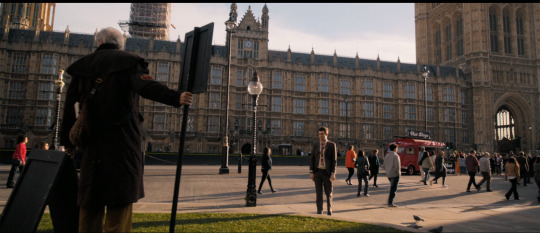
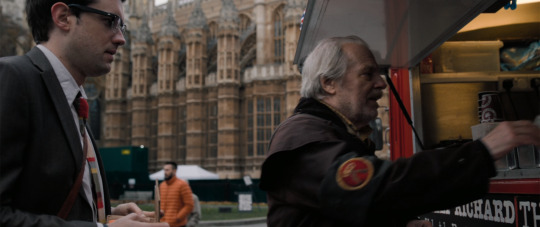
We also get some pretty obvious bright orange in main characters in S1: Madame Tracy and Beelzebub. We meet Tracy in orange as she immediately reveals to Newt multiple hidden identities, see her again wearing orange hair when she communes with spirits, and finally all decked out in orange when she is being possessed by an angel (a person hiding inside a person). Beelzebub wears an orange sash and medal as a high ranking Duke of Hell, so orange is maybe their house colour, or a prestigious colour for hell in general, but after season 2 we know Beelzebub doesn't always have the same face, and is hiding intentions of their own.
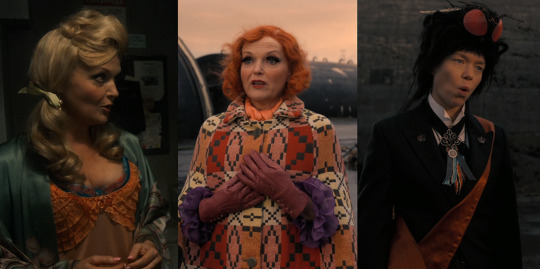
Orange doesn't have much biblical significance, mostly because the colour orange was mostly seen as "fire" or "bright" coloured until way after the bible was transcribed, and orange dye wasn't really a thing in the European world until significant trade with east Asia developed. Here's the only other bright orange thing to appear all season, (in a deleted scene): Crowley hiding in plain sight, posing as a maintenance worker.

I think we might be able to draw the conclusion from season 1 that orange is a colour associated with the "Hidden Occult/Power". Not necessarily only hell, but more as something otherworldly, that's hidden in plain sight. (Interestingly, we never ever see Anathema or Agnes Nutter in orange. So I wouldn't say it's related to witches at all.)
In season 2 however, orange is everywhere. More specifically on extras' clothing and the outside of Maggie's record shop.
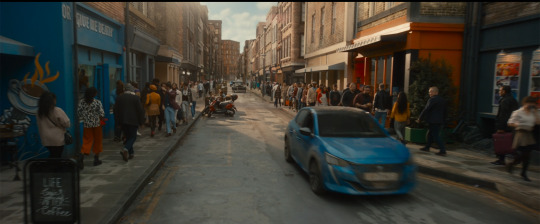
Maggie seems to be the only main character to wear bright orange herself (E2).

But this is by far my favourite one: in the back of the crowd of demons getting a Shax pep talk in S2E5, there's a regular human extra wearing bright orange sitting amongst the army, completely unnoticed by both demons and audience, observing the plan.

This really set off alarm bells for me, because there's a very Terry Pratchett precedent for powerful and unnoticed orange-wearing characters in the discworld series : the time monks.

Terry's character Sweeper seen here on the original cover of Night Watch.
The time monks' clothing and general philosophy is based on Thai buddhist monks, who (like in many buddhists sects) wear donated, saffron-dyed robes in orange and yellow/red to symbolize flames of purity, and to separate them from the world of gross matter, like a fallen leaf from a tree.
In the discworld novel Night Watch, the time monks are responsible for monitoring and cleaning up the timeline, pruning it like a bonzai tree. They are everywhere and yet unnoticed, inside the flow of time yet not of it. And they are the ones who guide the main character through the process of being stuck after falling back through his own timeline, into his own past.
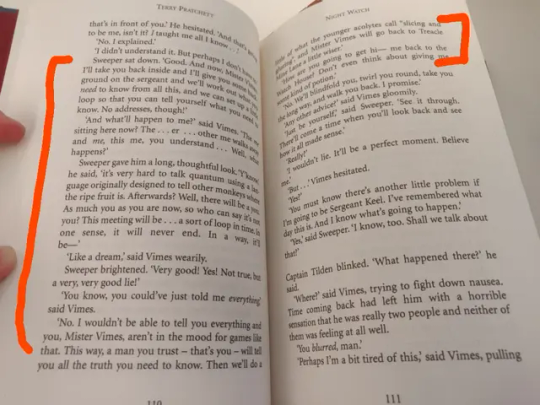
(Excerpt from the book where Sweeper is explaning time travel to Vimes).
Extras circling in the background are called "background actors" because they exist to not be noticed. Put in extras wearing orange/yellow and bright red, and suddenly you can track them, and notice how they are part of the crowd, but stand apart from it. You can notice when they go missing from one cut to the next, or appear to circle or jump between frames.
Many extras, including the demon army watcher, also seem to be circling, and monitoring the goings-on in the world of Good Omens. Based on the meaning of orange from S1, it would seem these mere background actors are more than they appear to be. Could they even be checking up on unwarranted time distortions or timeline ruptures happening around a certain Bookshop...?
#good omens 2#art director talks good omens#good omens meta#go season 2#go meta#good omens season 2#good omens season two#good omens#go2#good omens analysis#good omens s2#good omens theory
93 notes
·
View notes
Text
hell yeah. Give it to me Miyazaki-style senior Gaiman. I’m waiting.

Heaven is a place on earth ✨
7K notes
·
View notes
Text
The biggest Easter egg yet
I’ve been meaning to address this for a while now, but @camdenleisurepirates gave me the final push after reading my piece on Gabriel’s cross. Huge thanks for that morsel of motivation, my ADHD brain loves you.
This is going to be yet another long read, although not as extensive as my bookshop statues meta. Still, better get yourself some hot chocolate or another drink of your choice and make sure you’re comfortable!
Now, remember the X-Ray interview with Peter Anderson on Easter Eggs in the opening animation he created for the second season? Forget red herrings, apparently our fandom has a literal red phone box! I’m convinced that this whole scene is a one big — the biggest, actually — Easter Egg, and I’ll explain why step-by-step.
The red phone box Crowley used to warn Aziraphale about the Antichrist and the following Armageddon in S1, the exact one where he left change for an emergency call, seems important enough in terms of the future S3 plot, but there’s so much more going on in this frame. Not only the lift.
The angels
At the very start of this sequence we can see a fragment of an elaborate bridge guarded by cherubs sitting on two columns, maybe globes, leading to a distant structure built over a literal mountain of trash — all elements of the S1 and S2 openings which were consciously picked out by the animators and put together in a very ominous pile.
Ready for some scavenging?


In the Gabriel’s cross meta, I already mentioned the importance of Ponte Sant’Angelo in relation to the ex-Archangel’s statue. Now it’s time to widen our perspective and focus on the full picture — quite literally. Apparently the bridge from the opening sequence has ten statues of angels, exactly as the Italian historical monument.


First things first though: the two big cherubs guarding the entry to the bridge might seem familiar to some of you. While they’re obviously not copies of the same statue, a very similar pair of brass cherubs is placed in Aziraphale’s bookshop to symbolize Aziraphale and Crowley. And looking at the screenshot above and the way they sleep or sulk with their backs turned on each other, they are most certainly not talking. The addition of more than one set of eyes is a lovely reference to biblically accurate angel memes though.
If we assume the traditional left-right positioning of the characters, Aziraphale is on the left and Crowley is on the right. Directly behind Aziraphale we can see a ship named “Good Traits”, but in reverse — kinda sorta confirmed by the animator Peter Anderson to be connected to the concept of the seven deadly sins on Twitter. Same that was mentioned recently by Neil in one of his asks.

The presence of Gabriel — a renegade Archangel wielding a broken cross — on the right, Crowley’s side, seems to match this theory. It could also support one of the possible interpretations of the very last bookshop shot in the S2 finale.
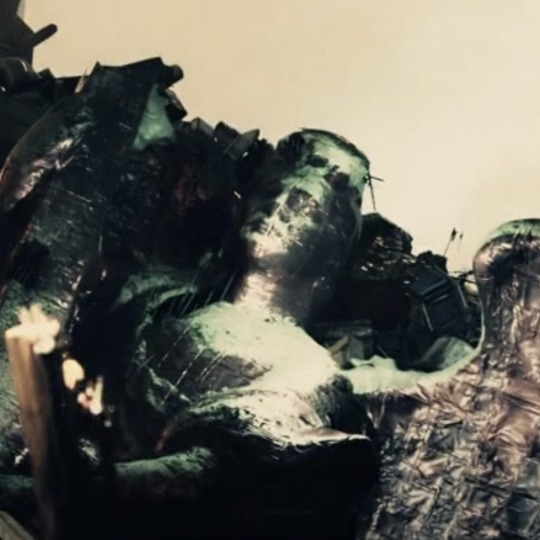
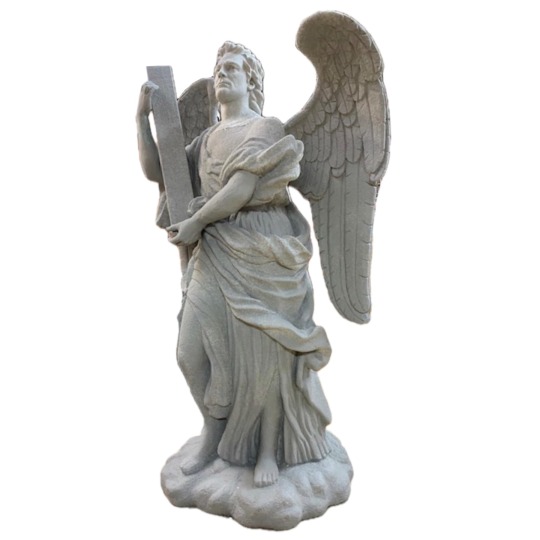
Out of all ten statues, Angel Carrying the Cross by Ercole Ferrata is considered inferior to the others on the bridge in that it appears to be a two-dimensional relief sculpture rather than an unbounded three-dimensional artwork, which seems to match Gabriel’s first impression as a character.
The inscription on the statue reads, “Dominion rests on his shoulders" — that is the weight of the cross that Christ was forced to carry through Jerusalem before being crucified. Even though Gabriel’s burden partially disappeared, the whole bridge and its environment is covered with crosses. It’s clear that we’re looking at a direct parallel of Via Crucis, the Way of Sorrows.
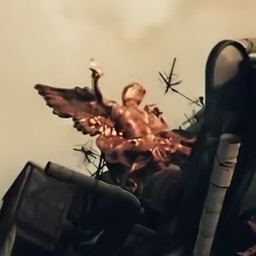
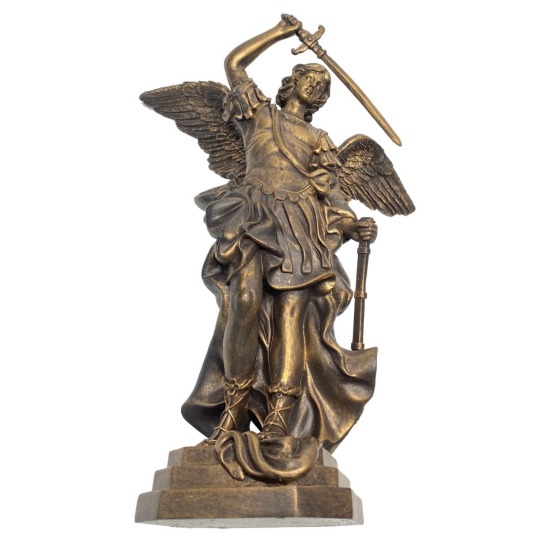
Towering over the Italian bridge, at the very top of Castel Sant’Angelo, is a statue of Archangel Michael, seen as the golden angel on the top left part of the trash pile. Aziraphale’s side, perhaps as his assistant, perhaps a rival? Legends of the Jews mention Michael as the chief of a band of angels who questioned God's decision to create man on Earth. The entire band of angels, except for Michael, was condemned to Fall — which could explain why they have such a good access to the Grapevine That Obviously Doesn’t Exist. And whatever’s going on between Michael and Dagon, perhaps.
In Roman Catholic teachings, Michael has four main roles or offices. Their first role is the leader of the Army of God and the leader of Heaven's forces in the final triumph over the powers of Hell. Viewed as the angelic model for the virtues of the spiritual warrior, their conflict with evil taken as the battle within. The second and third roles of Michael deal with death. Their second role is that of an angel of death, carrying the souls of Christians to Heaven. Michael descends at the hour of death and gives each soul the chance to redeem itself before passing; thus throwing the devil and his minions into consternation. In their third role, Michael weights souls on perfectly balanced scales they are often depicted with as their attribute. In their fourth role, Michael appears as the guardian of the Church. Might be the reason why they’re the closest to the building on top of the mountain.
It looks like Michael lost their sword though, just like Gabriel lost a part of the cross he was supposed to carry. The sword in question was supposed to be used to slay the dragon — Satan, the Adversary — according to John of Patmos and his Book of Revelations.
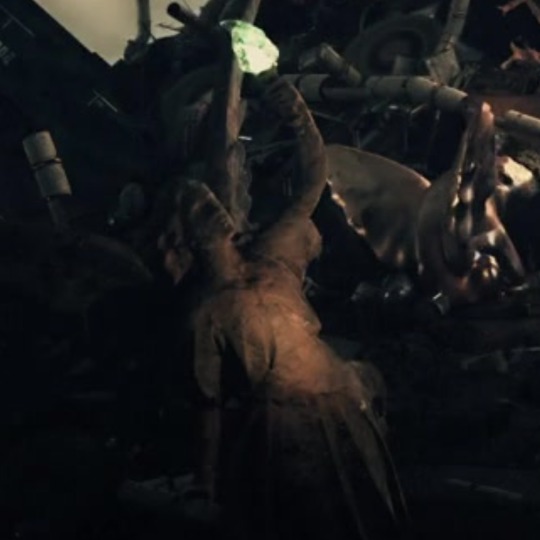
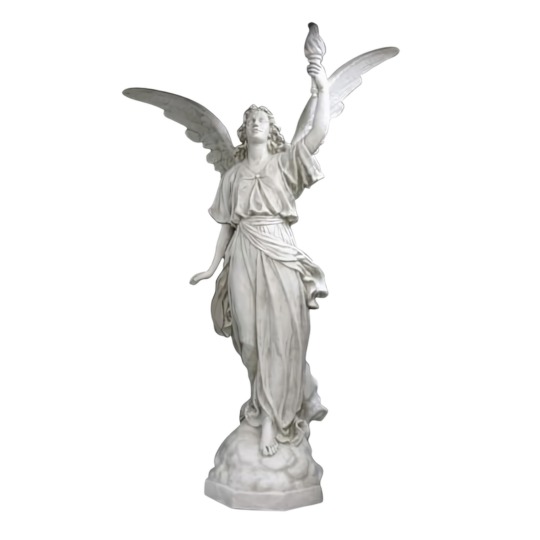
Speak of the devil: interestingly, there are two copies of an anonymous variation of the Angel of Light statue appearing twice on both sides of the bridge. Both the title as well as the statue itself seem like obvious references to one (former) angel literally called the Lightbringer, Lucifer. Perhaps one of them is representing his son, the Antichrist, instead, with the both of them helping out the Ineffables on two opposing — or perhaps only parallel — sides of the bridge?

The light carried by Lucifer appears to be green, a color used in the series as a visual representation of Hell, but on the intertextual level might also serve as a reference to F. Scott Fitzgerald’s classic novel The Great Gatsby and the green light at the end of the Daisy’s dock symbolizing the undying love, desperation, and longing for an unattainable dream. In the story, the color represents the limitations of power and money. Not surprisingly, the novel appears on Jim’s bookshelf and is part of the Good Omens book club — a list of personal recommendations from Neil Gaiman and Douglas Mackinnon for the fans to catch up on before the next series.
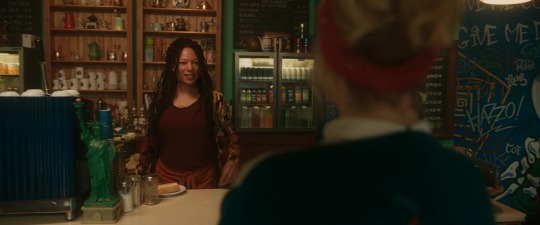
Last but not least, the possible connection to Libertas as the inspiration for the Statue of Liberty, shown multiple times in S2 as a foreshadowing of our character’s trip to America in S3. The related quote of Patrick Henry “Give me liberty or give me death” becomes even more relevant if we consider how the motto of the French Revolution was sometimes written as Liberté, égalité, fraternité ou la mort (“Liberty, equality, fraternity or death”). A lesson surely learnt by a certain angel back in 1793, when he was held prisoner for the last time before being forcefully taken Upstairs in the Final Fifteen.

The bridge and the castle
Okay, these are the basic observations. Now a brief historical overview and we will reach the fun bit in a jiffy.
Have you ever wondered about the meaning of this whole complex? It wasn’t always angelic, but named after a Roman noble dynasty. The Aelian bridge was built by the Emperor Hadrian in 134 AD to span River Tiber from the city center to his mausoleum. With time, the remains of more emperors were put to rest in there, until it was plundered and destroyed in a war. Then the remaining structure was transformed into a military fortress and a castle serving as the papal residence in times of war.

The Papal State also used Sant'Angelo as a prison; the Renaissance philosopher Giordano Bruno was imprisoned there for six years. Executions of the inmates were performed in the small inner courtyard, but they weren’t the only deaths in the area. On the other side of the bridge, in the adjoining Piazza del Ponte, under the watchful eyes of the stone likenesses of two saints, the public executions were held, and the heads of the criminals were brought onto the bridge and exposed to public view there.
As a prison, the former mausoleum is also the setting for the third act of Giacomo Puccini's 1900 opera Tosca. Long story short, the eponymous heroine convinces her lover to feign death so that they can flee together. Unfortunately, they are betrayed and the firing squad shoots at him with real bullets instead of blanks. Tosca believes in the quality of his acting performance rather than the truth, and when the realization hits her, she leaps to her death from the Castel’s ramparts.
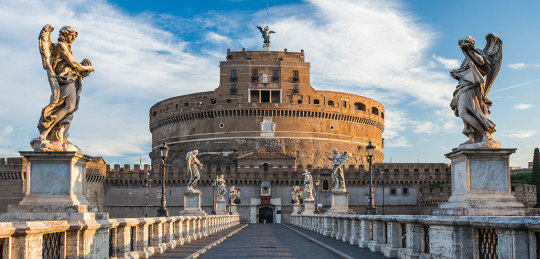
After Nero’s bridge was destroyed, the travelers were forced to cross this bridge as the only direct route to the Vatican and St Peter’s Basilica, earning it the nickname “the bridge of Saint Peter”. That’s why in the 16th century Pope Clement VII erected statues of Saints Peter and Paul at the ends of the bridge, guarding it as they are supposed to protect the entry to Heaven.
In 1688 the bridge was embellished with ten angel statues, five on each side of the bridge, carrying Arma Christi, the Instruments of the Passion. The Good Omens characters represented by those statues in the opening sequence might be other instruments of Christ’s suffering as parts of the system that needs to be overthrown or replaced.
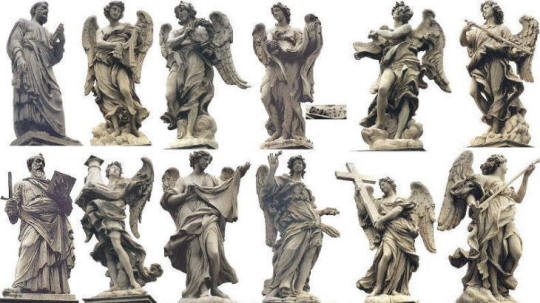
One angel appears particularly important in the context of both the bridge and the Second Coming — Saint Michael the Archangel.
Legend holds that the Archangel Michael appeared atop Hadrian’s mausoleum, sheathing their sword as a sign of the end of the plague of 590, thus lending the castle its present name. A less charitable yet more apt elaboration of the legend, given the militant disposition of this particular Archangel, was heard by the 15th-century traveler who saw an angel statue on the castle roof. He recounts that during a prolonged season of the plague, Pope Gregory I heard that the populace, even Christians, had begun revering a pagan idol at the church of Santa Agata in Suburra. A vision urged the Pope to lead a procession to the church. Upon arriving, the idol miraculously fell apart with a clap of thunder. Returning to St Peter's by the Aelian Bridge, the Pope had another vision of an angel atop the castle, wiping the blood from his sword on his mantle, and then sheathing it. While the Pope interpreted this as a sign that God was appeased, this did not prevent Gregory from destroying more sites of pagan worship in Rome. In honor of the vision and Michael, the bridge was renamed in their name.

What if the procession from the opening sequence was meant to imitate the procession led by the Pope from the legend? What if Aziraphale, now officially a Supreme Archangel, Commander of the Heavenly Host, is the one actually leading it, with Crowley finally at his side as his partner and second in command, just like it was proposed by him in the Final Fifteen?*
What if by some reason, maybe personal ambition, maybe just a tragic coincidence or situational necessity, there really was an impostor in Heaven, and Metatron — the so called Voice of God who seemingly doesn’t speak up for Herself since Job’s test — has been playing a winged version of the Wizard of Oz all along?
It would make just the perfect sense if not for one tiny detail. The procession we see on the bridge is actually led by Crowley, which doesn’t fit the parallel at all — unless it’s actually a proof of an ongoing body swap, as the mismatched names of the actors could also suggest?
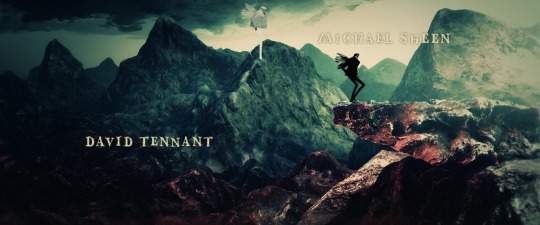
The mountain of trash and the bookshop
The symbolic mountain of trash we can see Aziraphale and Crowley climb is a reference in itself. To an actual mount called Zion, believed to be the place where Yahweh, the God of Israel, dwells (Isaiah 8:18; Psalm 74:2), the place where God is king (Isaiah 24:23) and where God has installed king David on his throne (Psalm 2:6).

In a literal sense, it’s a hill in Jerusalem, although the sources refer to three different locations in different contexts — although for the purpose of this meta the Upper Eastern Hill (Temple Mount) makes the most sense. Its highest part became the site of Solomon's Temple. The same King Solomon the rituals in Freemasonry refer to. Masonic buildings, where lodges and their members meet, are sometimes called "temples" specifically as an allegoric reference to King Solomon's Temple, not actual places of worship. And Aziraphale’s bookshop is built around Solomon’s Magic Circle.
In a metaphysical sense, and especially in the context of the Christian New Testament, it is also believed to be a part of Heaven — the heavenly Jerusalem, God's Holy, eternal city. Christians are said to have “(…) come to Mount Zion and to the city of the living God, the heavenly Jerusalem, to an innumerable company of angels, to the general assembly and church of the firstborn who are registered in heaven” (Hebrews 12:22-23 cf. Revelation 14:1). Just like the procession were following in the opening sequence.

There’s been some speculation whether the lift on top of the mountain could symbolize Aziraphale’s bookshop, or, more specifically, the oculus in its centre. If you look closely at the enhanced screenshot, you can see that the dome isn’t made of glass and that it looks like a tower (a church’s bell tower, perhaps) more than a whole building.
And there is an actual doorway in there — not like the modern lift doors — opening up towards the source of that white, heavenly light. And what kind of enlightenment can you usually find up in the skies or heavens?

We’re welcomed to crack open the doors to the Heavenly Sanctuary — the Most Holy place, Sanctum Sanctorum, the Holy of Holies — to undraw the final curtain and finally stand eye to eye with God. Who knows, maybe even ask some questions or listen to some answers.
Or, at the very least, to meet one of Her forms known as Jesus Christ. Because that’s precisely where he serves as our (humanity’s) Mediator and the Holy Priest after his Ascension to Heaven. The structure at the top reminds of some temple architecture seen in Antiquity and Christianity.
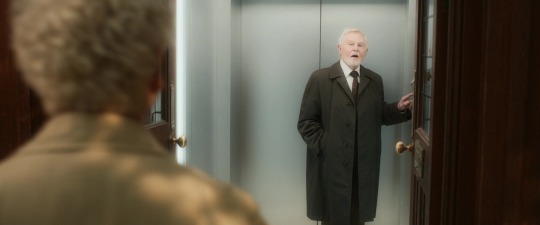
The Catholic Church considers the Church tabernacle or its location (traditionally at the rear of the sanctuary) as the symbolic equivalent of the Holy of Holies, due to the storage of consecrated hosts in that vessel and their meaning as the Body of Christ. Tabernacle is commonly marked with a red light turned on and off depending on His presence or lack if it.
Looks like He’s already in the area, one way or another, keeping eye on some things.
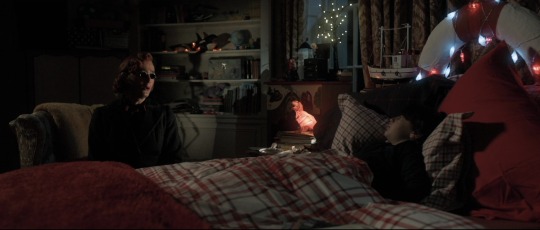

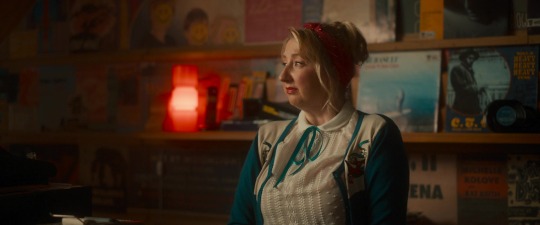

Are we following a procession of believers happy to embrace their one and true Savior? Or are they actually protesters on their way to dethrone the authority and the system?
Guess we will have to wait and see.
127 notes
·
View notes
Text
I don’t have a mets for you I’ve just got this BTS image of a record from Maggie’s record shop.

What you make of that is your business…
Has anyone done a meta about the bust in the bookshop? I would also accept a catalogue of scenes it's in. I have some suspicions about celestial eavesdropping when the bust is in the scene.
Edit: There is some information here by @youryurigoddess which also names the exact statue used and a paragraph of some assumptions on its meaning/purpose.
58 notes
·
View notes
Text
Suppose it’s as good a time as any to share these too


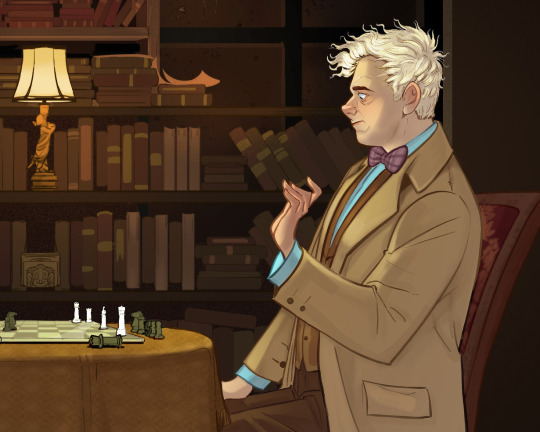
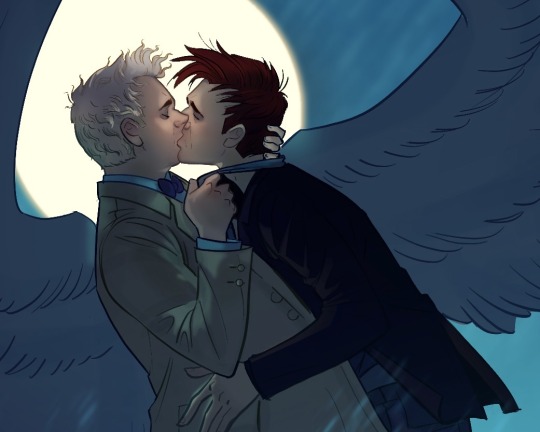

2K notes
·
View notes
Text
yasssss it’s criminal how under-drawn the supporting cast of good omens is. They’re all fabulous. They should get way more sexy portraits. Including Furfur. Reece Shearsmith is a beautiful dumbass in this show. I will hear nothing against it.
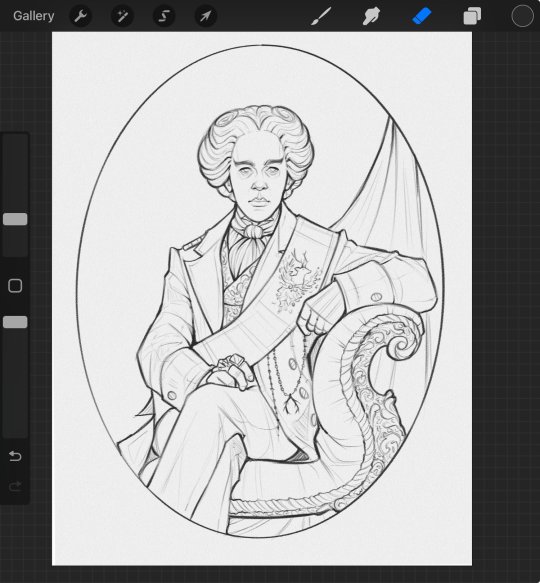

victorian furfur wip i did some time ago
293 notes
·
View notes
Text

Don’t read me like that in the tags.
The urge to bother my mutuals
119K notes
·
View notes
Text
A Matter of Life and Death seeping into Good Omens Season 2
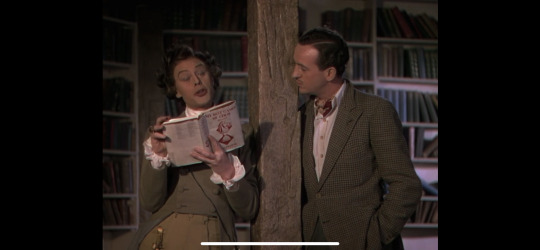





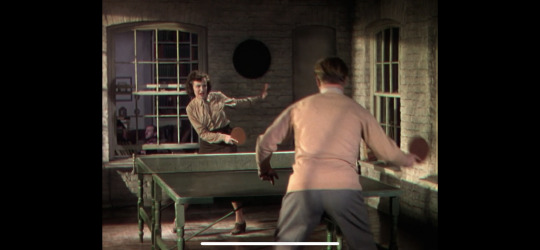





#good omens 2#art director talks good omens#go season 2#good omens season 2#good omens#go2#good omens season two#good omens prime#good omens spoilers#good omens analysis
108 notes
·
View notes
Text
As a film person, this is the most f*cked up thing that happened in all of Good Omens

Forget about the final 15. If there's anything that should convince you that there's something really wack going on in season 2 of Good Omens it should be this cut. I literally gasped when I saw it for the first time. It's SO BAD from a technical perspective. Because you've probably been watching TV and movies your whole life, you might instinctively feel there's something weird happening with this cut, but not be able to put your finger on what it is.
I am here to tell you: they sacrificed continuity of action to *change the main character of the shot in the middle of the scene*.
I won't do a full theory course on filmmaking here, but basically, when you want a fluid-feeling sequence of shots, especially when there's quite a lot of movement on screen, you have to conserve the direction and intention of that action to feel like it's all one take, and time is moving forward like we're used to in real life. Here, Crowley, Maggie and Nina all leave the Bookshop together, with Crowley and Maggie flanking Nina, who is centred in the shot. They are moving towards the camera as the camera is walking backwards, but at a slight curve camera-left. Crowley even turns his head and swings his arm left, making us feel like the camera will keep Nina center, and pan left or even cut wider to see more of the left of the street to watch them cross.


Well SURPRISE, idiots!
Forget everything you learned in film school because we're cutting immediately to a second medium length shot of the 3 characters from a slightly more camera-right perspective for no reason whatsoever, in the *opposite* direction of where the action is going, WHILE THAT ACTOR IS SPEAKING A LINE. This is so counterintuitive to the blocking of the scene that Maggie literally gets shoved out of frame while we're supposed to be reading her reaction to Crowley's dialogue.
I can't stress enough how weird it is on a fundamental level. When a camera is moving and a character is talking, conserving continuity of action is THE ONE thing you don't sacrifice. It pulls people out of the moment, and makes it extra obvious that multiple takes have been stitched together.
Which leads me to think that this is intentional, and sets up what I hinted to at the beginning of this whole "The More You Know" moment : Nina is the main character of the scene we're watching, until, suddenly, Crowley is.
If you separated those two moments before and after the cut and watch them as two different scenes, you can see the camera following Nina and keeping her center before, but directly following Crowley and keeping him center *after* the cut. We've switched narrators in this moment. And to top it all off, they're making it pretty obvious that, while Nina is listening and reacting to both Crowley and Maggie, Crowley does not give a rat's ass about the two humans (not either not really in frame, or cut off behind him).
#good omens 2#good omens meta#art director talks good omens#go season 2#go meta#good omens season 2#good omens season two#good omens#go2#good omens prime#crowley#anthony j crowley
601 notes
·
View notes
Text
Sigh, okay. But I think we are all not surprised that I end up being the *aesthetic* / tired one. @lookingatacupoftea and I are twins apparently.

as someone who has obviously done extensive research on the topic i would like to present to you all...dyketennant's "which david tennant character are you" uquiz

1K notes
·
View notes
